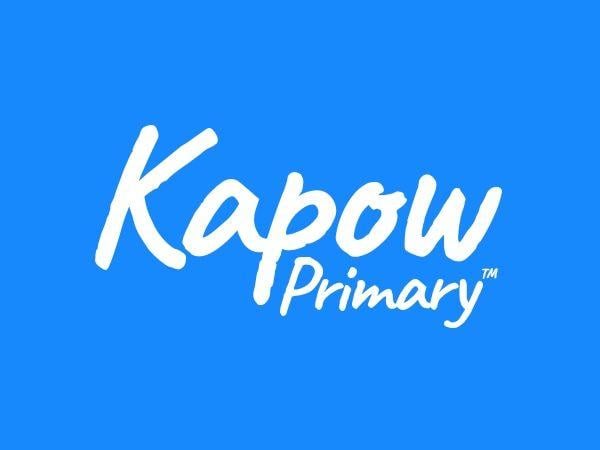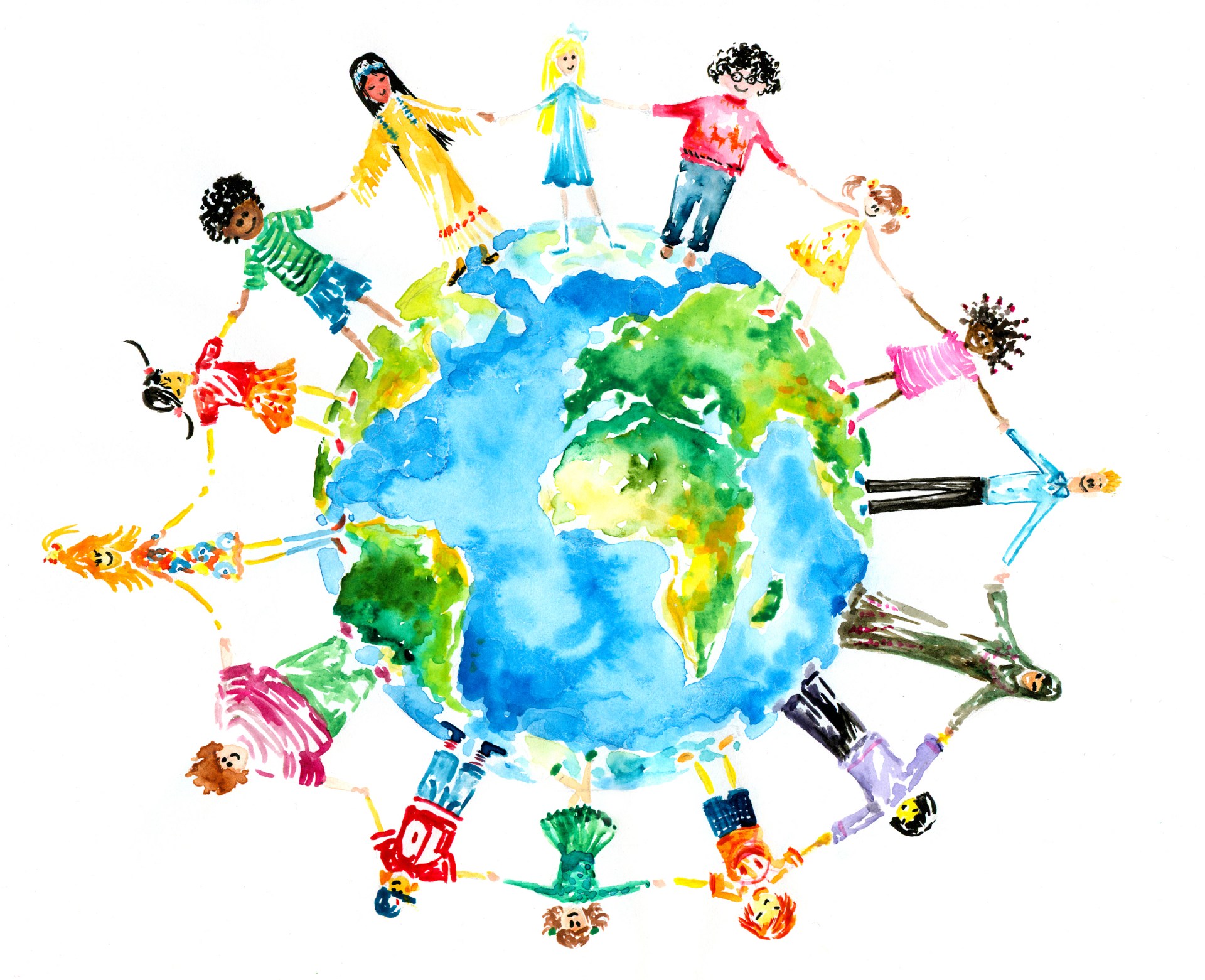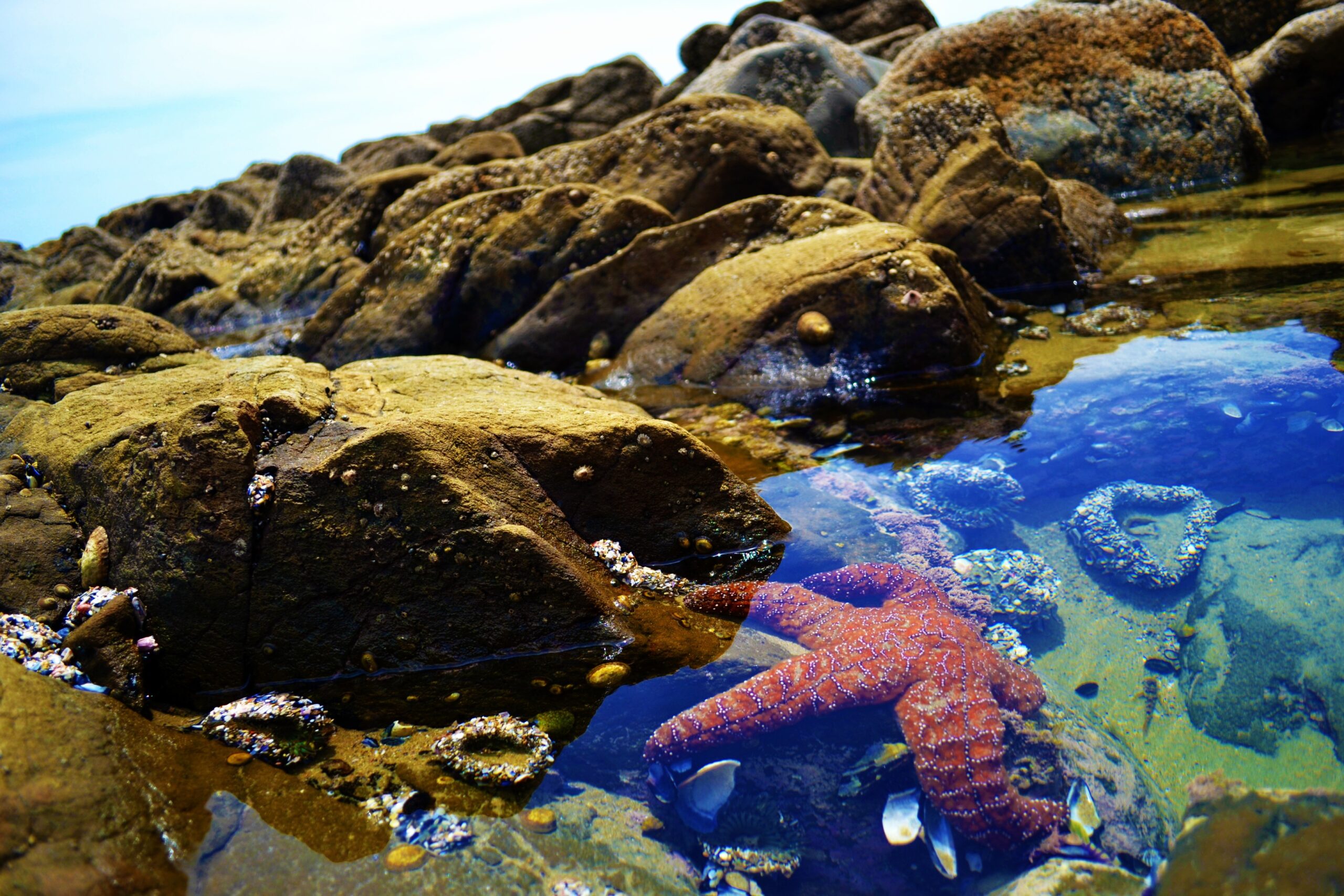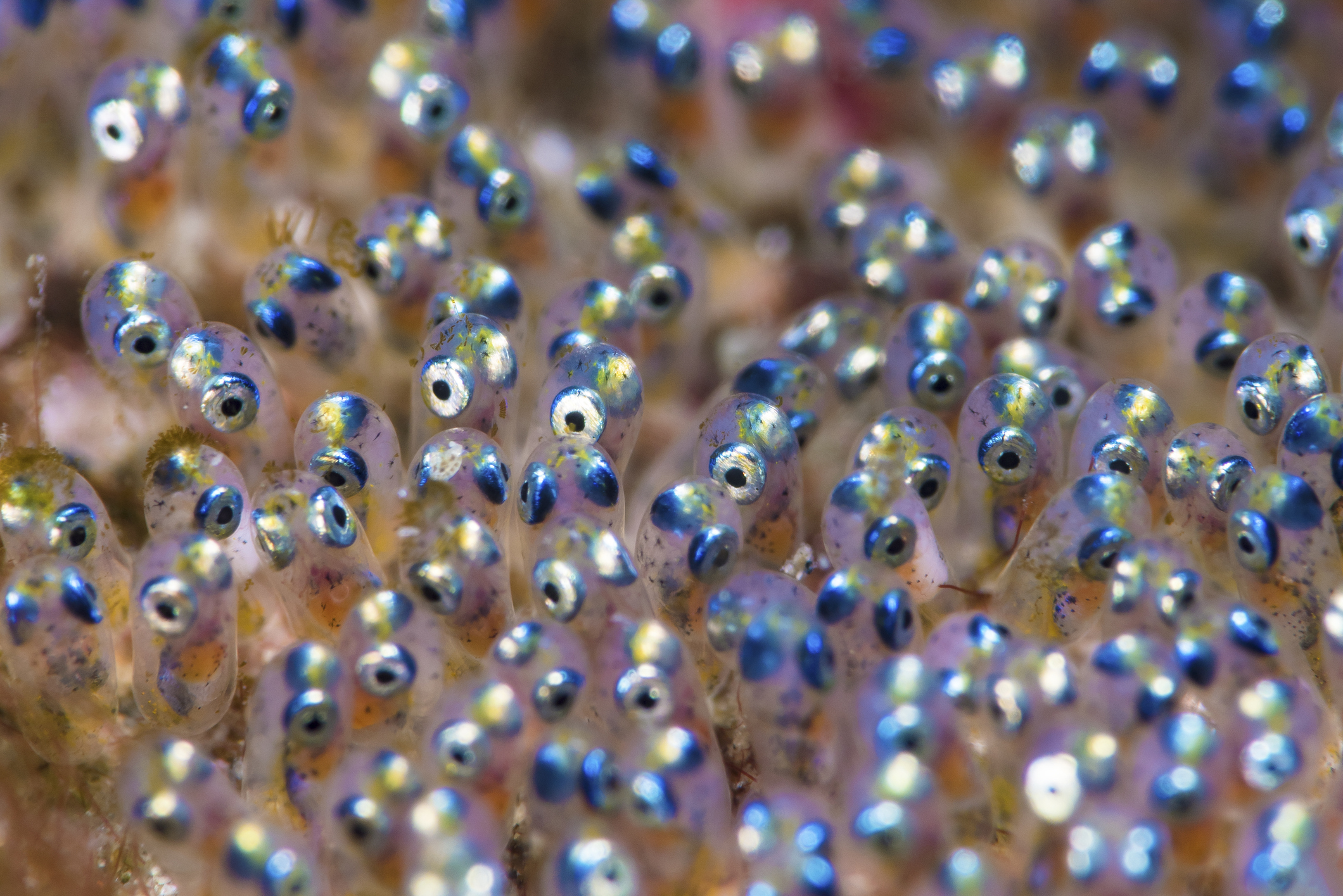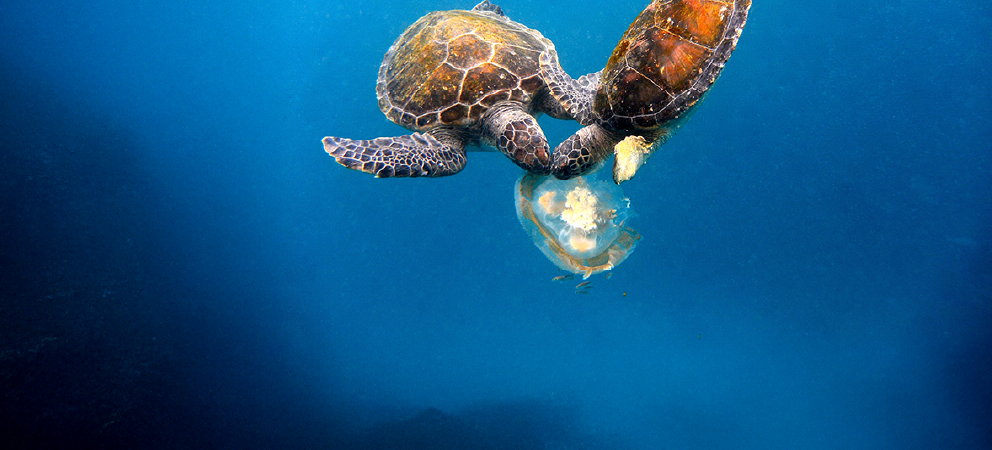Display the Presentation: Sorting ocean objects or arrange the equivalent objects in front of the class (see Have ready).
Learning objectives
Knowledge
- To describe some ways humans affect the ocean.
Working scientifically
- To investigate what happens to different materials in the ocean.
Success criteria
Knowledge
- I can recall some different types of litter that affect ocean habitats.
- I can describe some of the problems linked to ocean litter.
- I can suggest ways to reduce how human litter affects the ocean.
Working scientifically
- I can begin to plan an experiment to see what happens to materials in ocean water over time.
- I can predict changes to materials over time.
- I can observe and make comparisons of materials soaked in water.
National curriculum
Science
Plants
Pupils should be taught to:
- Identify and name a variety of common wild and garden plants, including deciduous and evergreen trees.
- Identify and describe the basic structure of a variety of common flowering plants, including trees.
- Observe and describe how seeds and bulbs grow into mature plants.
- Find out and describe how plants need water, light and a suitable temperature to grow and stay healthy.
Seasonal changes
Pupils should be taught to:
- Observe changes across the four seasons.
- Observe and describe weather associated with the seasons and how day length varies.
Animals, including humans
Pupils should be taught to:
- Notice that animals, including humans, have offspring which grow into adults.
- Find out about and describe the basic needs of animals, including humans, for survival (water, food and air).
- Describe the importance for humans of exercise, eating the right amounts of different types of food, and hygiene.
Living things and their habitats
Pupils should be taught to:
- Explore and compare the differences between things that are living, dead, and things that have never been alive.
- Identify that most living things live in habitats to which they are suited and describe how different habitats provide for the basic needs of different kinds of animals and plants, and how they depend on each other.
- Identify and name a variety of plants and animals in their habitats, including microhabitats.
- Describe how animals obtain their food from plants and other animals, using the idea of a simple food chain, and identify and name different sources of food.
Working scientifically
Pupils should be taught to use the following practical scientific methods, processes and skills:
- Asking simple questions and recognising that they can be answered in different ways.
- Observing closely, using simple equipment.
- Performing simple tests.
- Identifying and classifying.
- Using their observations and ideas to suggest answers to questions.
- Gathering and recording data to help in answering questions.
Cross-curricular links
English
Spoken language
Pupils should be taught to:
- Listen and respond appropriately to adults and their peers.
- Ask relevant questions to extend their understanding and knowledge.
- Use relevant strategies to build their vocabulary.
- Articulate and justify answers, arguments and opinions.
- Give well-structured descriptions, explanations and narratives for different purposes, including for expressing feelings.
- Maintain attention and participate actively in collaborative conversations, staying on topic and initiating and responding to comments.
- Use spoken language to develop understanding through speculating, hypothesising, imagining and exploring ideas.
- Participate in discussions, presentations, performances, role play, improvisations and debates.
- Gain, maintain and monitor the interest of the listener(s).
- Consider and evaluate different viewpoints, attending to and building on the contributions of others.
- Select and use appropriate registers for effective communication.
Reading – comprehension
Pupils should be taught to:
- Develop pleasure in reading, motivation to read, vocabulary and understanding by:
- listening to and discussing a wide range of poems, stories and non-fiction at a level beyond that at which they can read independently;
- being encouraged to link what they read or hear read to their own experiences;
- recognising and joining in with predictable phrases;
- learning to appreciate rhymes and poems, and to recite some by heart;
- discussing word meanings, linking new meanings to those already known.
- Understand both the books they can already read accurately and fluently and those they listen to by:
- drawing on what they already know or on background information and vocabulary provided by the teacher;
- checking that the text makes sense to them as they read and correcting inaccurate reading;
- making inferences on the basis of what is being said and done;
- predicting what might happen on the basis of what has been read so far.
- Participate in discussion about what is read to them, taking turns and listening to what others say.
- Explain clearly their understanding of what is read to them.
Writing – composition
Pupils should be taught to:
- Write sentences by:
- saying out loud what they are going to write about;
- composing a sentence orally before writing it;
- sequencing sentences to form short narratives;
- re-reading what they have written to check that it makes sense.
- Discuss what they have written with the teacher or other pupils.
- Read aloud their writing clearly enough to be heard by their peers and the teacher.
See National curriculum - English - Key stages 1 and 2.
Mathematics
Number – number and place value
Pupils should be taught to:
- Count to and across 100, forwards and backwards, beginning with 0 or 1, or from any given number.
- Identify and represent numbers using objects and pictorial representations including the number line, and use the language of: equal to, more than, less than (fewer), most, least.
- Read and write numbers from 1 to 20 in numerals and words.
See National curriculum - Mathematics - Key stages 1 and 2.
Geography
Human and physical geography
Pupils should be taught to:
- Identify seasonal and daily weather patterns in the United Kingdom and the location of hot and cold areas of the world in relation to the Equator and the North and South Poles.
- Use basic geographical vocabulary to refer to key physical features, including: beach, cliff, coast, forest, hill, mountain, sea, ocean, river, soil, valley, vegetation, season and weather.
See National curriculum – Geography - Key stages 1 and 2.
British values
- Mutual respect.
See Promoting fundamental British values as part of SMSC in schools (non-statutory advice) – contains public sector information licensed under the Open Government Licence v2.0.
Before the lesson
Check all images, videos, links and presentation slides are suitable for your class.
- Presentation: Sorting ocean objects.
- Presentation: Investigating ocean litter.
- Real objects to sort (optional – see Recap and recall):
- netting (for example, from oranges) to represent fishing nets;
- 1 plastic straw;
- 1 piece of rubbish;
- 1 plastic carrier bag;
- 1 sea shell;
- some seaweed or a plant to represent it;
- 1 toy fish;
- some sand.
- The book ‘Somebody Swallowed Stanley’ by Sarah Roberts (one teacher copy).
- Equipment to investigate ocean litter (see Main event):
- a range of litter such as plastic and paper straws, toilet tissue and paper towels, polystyrene and starch packing chips, nets from oranges to represent fishing nets, freezer or carrier bags and biodegradable or regular baby wipes (one piece between two);
- transparent plastic bottles (one between two);
- whiteboard pens or permanent markers (one between two);
- access to water;
- salt to add to the water to represent salty ocean water (optional).
- Link: CBeebies - Somebody Swallowed Stanley (optional) – this is an external website and we do not have control over its content – please check before showing it to the children.
Print in advance of the lesson.
Subject knowledge
This lesson revises subject knowledge from the units Science, Year 1/2 (A), Living things: Habitats. Look for any associated misconceptions in the unit lessons.
- The children may notice that the paper straws do not break up as much as expected. It is because they are often coated with wax or plastic to stop them from going soggy while in use.
- Paper straws may break down quicker than plastic alternatives, but some research suggests they contain other ‘forever chemicals’ that can contaminate water supplies and cause problems. This may mean they are not a better, more sustainable alternative to plastic straws.
- However, plastic straws’ rigidity is more likely to harm animals that come into contact with them.
Enquiry type
- This lesson includes an observing over time enquiry. It looks for changes in litter integrity when soaked in water over time.
Lesson organisation
- Use the link: CBeebies - Somebody Swallowed Stanley if a copy of ‘Somebody Swallowed Stanley’ by Sarah Roberts is unavailable.
- Test available litter rather than purchasing items specifically to reuse non-biodegradable materials. Examples of biodegradable and non-biodegradable materials being experimented on can be seen and shared with the class in the Pupil video: Investigating ocean litter (from 0:50).
The information within this section provides basic generic guidance only and is not tailored to the circumstances of your school or class. You must ensure you refer to and follow your own school’s health & safety policy and complete any necessary risk assessments. If you know a child has specific issues, consider discussing the lesson with them in advance and adapting it as needed. They might benefit from adult support. If problems emerge during the lesson, consult your Senior Leadership Team. It is the teacher’s responsibility to check all resources and lesson content to ensure it is suitable for their class setting.
Health and safety
Remind the children:
- To use the equipment only as directed by the teacher.
Sensitivities
The lesson deals with themes of animal distress or harm due to ocean litter.
Lesson plan
1: Recap and recall
Presentation: Sorting ocean objects
Ask the children to discuss with a partner how they would sort the objects into two piles:
- Things that belong in the ocean.
- Things that do not belong in the ocean.
Ask for a volunteer to be in charge of either moving the objects or dragging the items in the presentation. Take class votes for each item to help decide which pile it belongs in. Encourage the children to justify opinions that differ from the majority, for example, the toy fish should not be in the ocean but a real fish should.
2: Attention grabber
Hold up the storybook ‘Somebody Swallowed Stanley’ by Sarah Roberts and inform the class that things that do not belong in the ocean can be very confusing for the ocean animals that live there. Point to Stanley, the carrier bag, on the front of the book and ask the class:
- Does Stanley belong in the ocean? (No.)
Explain to the class that they should try to remember as many things as possible that do and do not belong in the ocean.
Read the story aloud or use the link: CBeebies - Somebody Swallowed Stanley and pause at key moments to draw attention to things found in the ocean or to relate to the feeding relationships explored.
Questions
- What things did you see that belong in the ocean? (Jellyfish, fish, seaweed, the whale, barnacles, anemones and the sea turtle.)
- What things did you see that did not belong in the ocean? (Stanley, the carrier bag, Stanley as a kite and its string.)
- Why did the animals keep trying to eat Stanley? (Carrier bags floating in water look like jellyfish, which is food or prey for many ocean creatures.)
- Why is it dangerous for the animals trying to eat Stanley? (Carrier bags cannot be eaten and may harm or stop the animals from eating real food.)
3: Main event
Ask the class:
- How could scientists investigate what happens to litter if it ends up in the ocean?
Take initial ideas and emphasise that the method must not actually cause any harm to ocean habitats by testing it directly on them. Display slide 1 of the Presentation: Investigating ocean litter, which shows the enquiry cycle.
Presentation: Investigating ocean litter
Click on the question to reveal the focus of the class investigation:
- What happens to litter if it ends up in the ocean?
Remind the class that scientists use various methods to find answers to questions. Click on the icons in turn to make the following points:
- Researching: the book read at the start of the lesson has shown some problems linked to litter in the ocean so it is a form of research.
- Observing over time: this would show what happens to litter when left in ocean water and whether it stays to carry on causing problems.
- Comparative and fair testing: this is more suitable for testing one particular type of litter or specific conditions.
- Grouping: the question does not require sorting or grouping objects.
- Spotting patterns: this question does not involve spotting patterns.
Explain to the class that they will observe over time to see what happens to different types of litter when soaked in ocean water. They can then decide how likely different litter is to cause problems in an ocean habitat.
Return to slide 1 by clicking on the pink arrow and select the observe, test and measure tile to display a shuffled method on slide 2. Read the steps aloud and allow the children to discuss in pairs which order they think the steps should go in. Ask for a volunteer to rearrange the steps in the presentation. Encourage the children to think about being fair in the method steps by giving exaggerated differences between groups, for example, asking if it is fair if one group shakes their bottle for one second compared to ten seconds or if a group leaves their bottle for one day but another leaves it for a week.
Questions
- What do you think will happen to the different litter over time?
- Why?
Allow time for paired discussion and ask them to write their prediction in their book.
Demonstrate how to complete the experiment with the available equipment or watch the Pupil video: Investigating ocean litter, until 00:50 if preferred.
Pupil video: Investigating ocean litter
Arrange the class into pairs and allow them to collect their equipment (one bottle, one piece of litter and one whiteboard pen or permanent marker). Show the children where to fill up their bottles, either from a water source within the classroom or available jugs.
At the point of shaking the bottles and observing initial changes, take feedback.
Questions
- Which litter has stayed the same so far?
- Which litter has begun to change? (At this point of the experiment, it may only be tissue and biodegradable packing chips that have broken apart.)
- How does this match your prediction?
4: Wrapping up
Choose one bottle for each type of litter that has been soaking. Ask for a volunteer to hold each bottle at the front of the class. Invite the class to observe the changes to the materials inside the bottles. Ask them to help rearrange the volunteers from ‘most changed’ to ‘least changed’, based on what they can see. Discuss which material could be the worst for ocean animals. Ask the children how confident they are in their choice at this stage of the experiment. They may begin to justify their reasons based on the animals trying to eat Stanley from the book.
Explain to the class that they will leave their bottles in a set place for one week and return to check their predictions and observe the results.
Ask the class:
- Can you think of any ways we can help look after ocean habitats based on what we have learnt? (Ideas may include picking up litter on beaches so that it does not end up in the water; taking litter home with them after being on a beach; choosing materials that break up in water easily.)
Extended-mode explainer videos
How to extend your display to view the lesson page and preseantion mode simultaneously. Choose your operating system below to watch the video
If you need further support with extending your display,
please contact [email protected].
Extended-mode explainer video: For Mac
Extended-mode explainer video: For Windows
Adaptive teaching
Pupils needing extra support
Could watch the Pupil video: Investigating ocean litter up to 00:50 as a pre-teaching opportunity to prepare for the investigation; could draw a picture or use the vocabulary on slide 2 of the Presentation: Investigating ocean litter (results table) to help predict what will happen.
Pupils working at greater depth
Should consider different time frames when predicting the changes to the litter in water over time, for example, predicting which will break up the quickest and which will only change after a week; could predict the outcome of further litter or material types based on the initial observations in the lesson.
Assessing progress and understanding
Pupils with secure understanding indicated by: recalling some different types of litter that affect ocean habitats and some of the problems they cause; suggesting ways to reduce how human litter affects the ocean; beginning to plan a method to investigate ocean litter; predicting changes to the litter soaked in water over time; observing and making comparisons of litter soaked in water over time.
Pupils working at greater depth indicated by: predicting the outcome of a variety of materials or litter soaked in water, with consideration of which will be affected during the lesson or over a week.
Vocabulary definitions
-
litter
Waste or rubbish left out in spaces.
-
method
Step-by-step instructions.
-
observe
To watch carefully.
-
predict
To guess what will happen.
-
test
A way to find the answer to a question.

